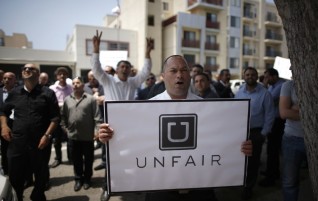
By: Brad Stringfellow,
The FTC is cracking down on social media ads and seeking to enforce proper disclosure amongst celebrity endorsers and advertisers. The means by which people connect with one another seem to be expanding at an ever-increasing rate. As conventional media loses its predominant grasp on consumer attention, advertisers have sought alternative means to promote their products. The FTC is doing its best to step in and regulate advertisements across all platforms, including social media.
Under the Federal Trade Commission Act, the FTC has been granted the broad authority to regulate “unfair or deceptive practices in or affecting commerce.”[1] FTC guidelines can be boiled down to four basic principles that all advertisements must meet: “1) Advertisements must be truthful and not misleading; 2) Advertisements may not be unfair or deceptive; 3) Advertisers must substantiate all claims, whether express or implied; 4) Any disclosures necessary to make an advertisement accurate must be clear and conspicuous.”[2]
The FTC has been putting in a fair amount of effort to adapt to changes in the digital landscape, and has done a fair job of doing so for a federal agency. The most recent change was put into place in December 2015 regarding deceptive formatting.[3] The FTC has been focusing heavily on proper disclosures within all social media. A handy, non-technical guide has been created by the FTC and put on their website to help people understand how to properly disclose promoted material.[4]
Social media stars who promote products or services are dubbed influencers.[5] Because of the personal nature of social media accounts and the much more informal atmosphere, disclosures are all the more important for the public to know when an influencer is sharing on honest opinion or hawking a product. The FTC guide gives a handy example of the weight you would give to the opinion of a travel blogger who paid from their own pocket to stay at a resort versus the opinion of a travel blogger paid by the resort.[6]
One is obligated to follow the guidelines if they have a “material connection” to an advertiser; this can be met by receiving gifts or being related to someone at the company.[7] The guide requires that a disclosure be made when a lack of disclosure misleads “a significant minority” of consumers.[8]
Anticipating questions of constrained formats, such as Twitter, the guide points out that “sponsored” and “promotion” are only nine characters, “paid ad” is only seven characters, and that “#ad” or starting the tweet with “Ad:” is only three characters: the FTC does not require specific words to meet the disclosure threshold, but does provide simple suggestions for fulfilling it.[9] In situations where a disclosure is not possible, such as adding a “Like” to a company or product, the FTC recommends against such acts.[10] It is interesting to note that making a three hour video endorsing a product is acceptable with one spoken sentence disclosing your relationship, but a simple tap of your thumb giving a heart symbol to a product page is impossible to disclose.
In order to demonstrate the seriousness with which they take these guidelines, the FTC has pursued several social media campaigns that made insufficient efforts to disclose. The FTC recently reached a settlement with Warner Brothers over the promotion of a video game advertised by several Youtube influencers.[11] While Warner Brothers, through an ad agency, instructed the influencers to include a disclosure statement buried in the video description box; the FTC found this insufficient and pursued a civil action.[12] Earlier in the year, the FTC went after Lord & Taylor, clothing manufacturers, who used fashion bloggers to promote a sundress from a new line.[13] While the company instructed the influencers to include the company name and dress line in the Instagram posts, the FTC found this as an insufficient disclosure as it provided no indication the influencers were paid for the post.[14]
Several media watch dog groups have also taken action to help enforce policy guidelines. Three such watch dog groups have filed complaints with the FTC regarding sponsored content targeted towards children.[15] Following the line of reasoning of harsh censures on advertisers of Saturday morning cartoons in the 1980s, the groups petition strict guidelines or outright banning of sponsored content coming from Disney and Dreamworks through various agents.[16] No action has been taken by the FTC yet.[17] Likewise, another watch dog group found over 100 instances of paid product placement with improper disclosure by various members of the Kardashian family.[18] The Kardashians were given the option to delete improperly disclosed posts or face being turned in to the FTC.[19]
A few companies are recognizing the FTC’s efforts and are taking a pro-active approach in promoting disclosure. As of last month, Youtube has updated their sponsored content guidelines.[20] They have also added a few new features to help promote disclosure, such as the option to add a “sponsored content” line at the beginning of a video.[21] Electronic Arts (EA), a gaming software company has also put in place new policies.[22] EA now mandates that any influencer receiving any kind of benefit (free software, paid trips, gifts, etc) add watermarks or hashtags “Supported by EA” for content where EA has no editing rights, and “Advertisement EA” for content where EA does have editing rights.[23]
The FTC has established standards for the social media world, and has begun enforcing their policy. Advertisers are taking notice and beginning to take action. Hopefully, consumers will benefit and be better able to distinguish when they are advertised to.
[1] 15 USC § 45(a)(2).
[2] See Michael W. Schroeder. The FTC’s Crackdown on Social Media #Ads, Lex (Nov. 3, 2016), http://www.lexology.com/library/detail.aspx?g=a62ff1c5-c8fc-45f7-9eea-903be4ecac58.
[3] See id.
[4] See Fed. Trade Comm’n, The FTC’s Endorsement Guides: What People are Asking (last visited Nov. 23, 2016), https://www.ftc.gov/tips-advice/business-center/guidance/ftcs-endorsement-guides-what-people-are-asking.
[5] See id.
[6] See id.
[7] See id.
[8] See id.
[9] See supra note 4, Fed. Trade Comm’n.
[10] See id.
[11] See Wendy Davis, Warner Bros. Finalize FTC Settlement Over Influencer Campaign, The Daily Online Examiner (Nov. 22, 2016, 5:14 PM), http://www.mediapost.com/publications/article/289543/warner-bros-finalizes-ftc-settlement-over-influen.html.
[12] See id.
[13] See id.
[14] See id.
[15] See Jon Fingas, FTC Complaint Blasts Disney, Google over Child Influencer Videos, Engadget (Oct. 24, 2016), https://www.engadget.com/2016/10/24/ftc-complaint-over-influencer-videos-targeting-kids/.
[16] See id.
[17] See id.
[18] See Janko Roettgers, Kardashians in Trouble Over Paid Product Endorsements on Instagram, Variety (Aug. 22, 2016, 10:52 AM), http://variety.com/2016/digital/news/kardashians-instagram-paid-ads-product-placements-1201842072/.
[19] See id.
[20] See Youtube, Paid Product Placements and Endorsements (last visited Nov. 23, 2016), https://support.google.com/youtube/answer/154235#paid_promotion_disclosure.
[21] See id.
[22] See Julia Alexander, EA puts Influencers in Check with Disclosure Rules for Sponsored Content, Polygon (Nov. 16, 2016, 4:00 PM), http://www.polygon.com/2016/11/16/13655180/ea-sponsored-content-youtube-twitch-disclosure.
[23] See id.
Image Source: https://14415-presscdn-0-52-pagely.netdna-ssl.com/wp-content/uploads/2014/01/Untitled3.png










